
Operation Enduring Freedom – Philippines (OEF-P) or Operation Freedom Eagle was part of Operation Enduring Freedom and the global War on Terror. The Operation targeted the various Jihadist terror groups operating in the country. By 2009, about 600 U.S. military personnel were advising and assisting the Armed Forces of the Philippines (AFP) in the Southern Philippines. In addition, by 2014, the CIA had sent its elite paramilitary officers from their Special Activities Division to hunt down and kill or capture key terrorist leaders. This group had the most success in combating and capturing Al-Qaeda leaders and the leaders of associated groups like Abu Sayyaf.

Eighteenth Air Force (Air Forces Transportation) (18 AF) is the only Numbered Air Force (NAF) in Air Mobility Command (AMC) and one of the largest NAFs in the United States Air Force. 18 AF was activated on 28 March 1951, inactivated on 1 January 1958, and re-activated on 1 October 2003. 18 AF is headquartered at Scott Air Force Base, Illinois.

United States Indo-Pacific Command (USINDOPACOM) is the unified combatant command of the United States Armed Forces responsible for the Indo-Pacific region.

The 13th Sustainment Command (Expeditionary)—the "Lucky 13th"—is a U.S. Army modular sustainment command which serves as a forward presence for expeditionary operations for a theater, or in support of a regional combatant commander. Expeditionary sustainment commands (ESC), such as the 13th, synchronize distribution of supplies and services within their operational areas and provides distribution oversight. Formed at Fort Hood, Texas when the 1st Logistics Command deployed to Vietnam, the organization then known as the 13th Support Brigade was initially responsible for the training of technical services units to assume combat service support missions in Southeast Asia.
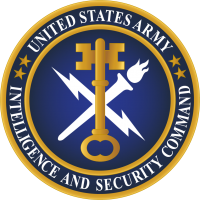
The United States Army Intelligence and Security Command (INSCOM) is a direct reporting unit that conducts intelligence, security, and information operations for United States Army commanders, partners in the Intelligence Community, and national decision-makers. INSCOM is headquartered at Fort Belvoir, Virginia.

Marine Forces Pacific (MARFORPAC) is the United States Marine Corps service component command of United States Indo-Pacific Command. It is the largest field command in the Marine Corps and is headquartered at Camp H. M. Smith in Hawaii.

The 1st Special Forces Group (Airborne) (1st SFG) (A) is a unit of the U.S. Army Special Forces operating under the United States Pacific Command. It is designed to deploy and execute nine doctrinal missions throughout the Indo-Pacific Command area of operations: unconventional warfare, foreign internal defense, direct action, counter-insurgency, special reconnaissance, counter-terrorism, information operations, counterproliferation of weapon of mass destruction, and security force assistance.

Lieutenant General Donald C. Wurster is a retired Commander, Air Force Special Operations Command, Hurlburt Field, FL. The command is a major command of the U.S. Air Force and the Air Force component of U.S. Special Operations Command. AFSOC provides Air Force Special Operations Forces for worldwide deployment and assignment to unified combatant commanders. The command has approximately 12,900 active-duty, Reserve, Air National Guard and civilian professionals.
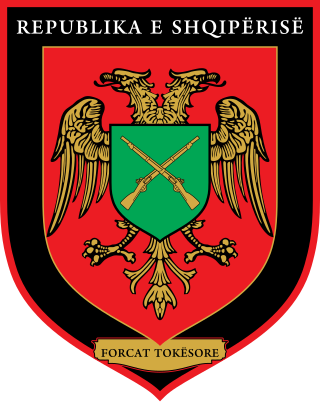
The Albanian Land Force is the land force branch of the Albanian Armed Forces.

A Joint Task Force is a "joint" (multi-service) ad hoc military formation. The task force concept originated with the United States Navy in the 1920s and 1930s.

Special Operations Command Korea or SOCKOR, the United States (U.S.) Theater Special Operations Command (TSOC) in the Republic of Korea (ROK), is a Sub-Unified Command assigned under the Combatant Command (COCOM) of United States Special Operations Command (USSOCOM), who delegated Operational Command (OPCON) of SOCKOR to the U.S. Indo-Pacific Command (USINDOPACOM) Commander, who further delegated OPCON of SOCKOR to the United States Forces Korea (USFK) Commander.
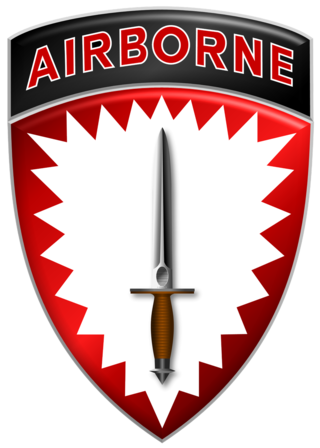
U.S. Special Operations Command Europe is a subordinate unified command of United States Special Operations Command.

Lieutenant General Eric E. Fiel is a retired United States Air Force officer who served as commander of Air Force Special Operations Command from 2011 to 2014. The command is the Air Force component of United States Special Operations Command. AFSOC provides Air Force special operations forces for worldwide deployment and assignment to unified combatant commanders. The command has approximately 16,000 active-duty, Reserve, Air National Guard and civilian professionals.

Far East Command (FECOM) was a unified combatant command of the United States Department of Defense, active from 1947 until 1957, functionally organised to undertake the occupation of Japan and Korea. The 1st and 6th Marine Divisions, who from 1945 to 1948 assisted the Chinese government in occupying northern China, disarming the Japanese, and helping the Kuomintang Chinese without fully getting involved in the Chinese Civil War, were not part of Far East Command and reported to Pacific Command and the U.S. Navy.

Sean Averell Pybus is a retired United States Navy Vice Admiral who last served as the deputy Commander, U.S. Special Operations Command (USSOCOM) from 2014 to 2016. He previously served as the Commander, Naval Special Warfare Command from 2011 to 2013.

Jonathan Patrick Braga is a United States Army lieutenant general, serving as the commanding general of United States Army Special Operations Command since 13 August 2021. He previously served as a deputy commanding general of United States Army Pacific from August 2020 to July 2021, as commander of Special Operations Command Pacific from July 2018 to August 2020, and before that as operations director of Operation Inherent Resolve, the official name for the US war on ISIS.

Bryan Patrick Fenton is a United States Army general who serves as the 13th commander of the United States Special Operations Command since 30 August 2022. He most recently served as the 16th commander of the Joint Special Operations Command from July 2021 to August 2022. and as the senior military assistant to the Secretary of Defense from 12 August 2019 to June 2021. He previously served as the deputy commander of United States Indo-Pacific Command. Fenton is a graduate of the University of Notre Dame.
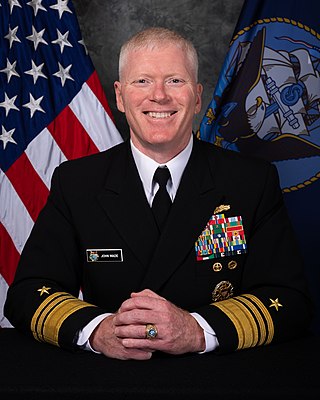
John Fredric G. Wade is a United States Navy vice admiral who has served as the commander of Joint Task Force Red Hill since September 12, 2022. He previously served as the director of operations of the United States Indo-Pacific Command from October 2020 to September 2022.

Stephen Douglas Sklenka is a United States Marine Corps lieutenant general who has served as the deputy commander of the United States Indo-Pacific Command since August 16, 2021. He previously served as the Director of Strategic Planning and Policy of the United States Indo-Pacific Command from July 2019. Previously, he was the Commanding General of the 1st Marine Logistics Group.
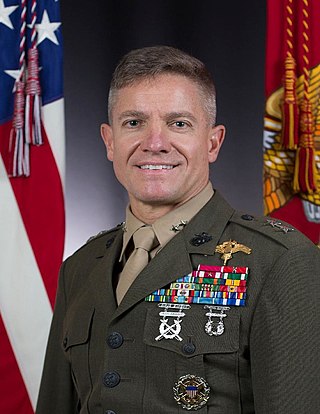
Matthew G. Trollinger is a United States Marine Corps major general who serves as the commander of United States Marine Forces Special Operations Command since May 23, 2022. He most recently served as the Deputy Director for Politico-Military Affairs of the Joint Staff. He was previously the Commanding General of the 5th Marine Expeditionary Brigade from July 2018 to July 6, 2020.
























